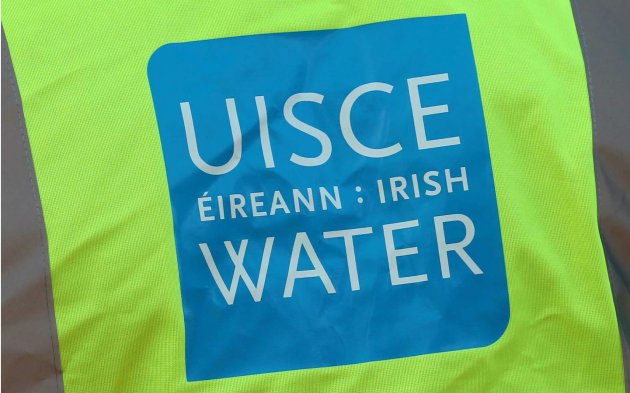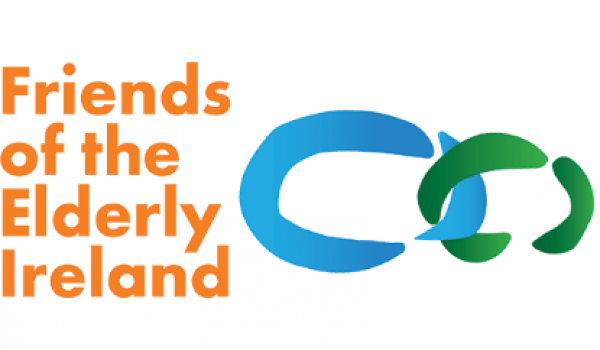
Irish Water says ten exceedances for pesticides have been found in two Donegal rivers in recent years.
2,4-D and MCPA were detected in the public drinking water supplies in the Ballyagroarty supply near Ballintra in 2020, and in the Fanad East (Shannagh) supply in 2019 and 2020.
MCPA is an active substance present in many commonly used herbicide products used to control the growth of thistles, docks and rushes and remains the most commonly detected pesticide in Ireland. These exceedances were detected as part of Irish Water’s public water supply monitoring programme.
The Ballymagroarty supply draws water from Lough Gorman and the River Eske, while the Fanad East supply draws water from Shannagh Lake. Irish Water says all of these are vulnerable to runoff from land, and it is urging users of any herbicide or pesticide products in these catchments to consider the vulnerability of the water supplies to pesticide contamination.
**************************
Release in full –
Issued Tuesday, 16 March 2021 – Ten exceedances for the pesticides 2,4-D and MCPA were detected in the public drinking water supplies in Ballymagroarty and Donegal (River Eske) in 2020 and in Fanad East (Shannagh) in 2019 and 2020. MCPA is an active substance present in many commonly used herbicide products used to control the growth of thistles, docks and rushes and remains the most commonly detected pesticide in Ireland. These exceedances were detected as part of Irish Water’s public water supply monitoring programme.
Ballymagroarty, Donegal (River Eske) and Fanad East (Shannagh) drinking water supplies abstract raw water from Lough Gorman, River Eske and Shannagh Lake respectively, all of which are vulnerable to runoff from land. Irish Water is asking users of any herbicide or pesticide products in these catchments to consider the vulnerability of the water supplies to pesticide contamination and the importance of these supplies to the local homes and businesses in the community.
Irish Water, working in partnership with a range of organisations involved in the National Pesticides and Drinking Water Action Group (NPDWAG), is asking the farming community, greens keepers, grounds keepers, and domestic users, to consider in each case whether they need to use pesticides at all. Minimising pesticide use not only helps to protect water quality but also has wider environmental benefits. For example, leaving areas unsprayed can help native flowering plant species to grow and support a range of insects including bees and other vital pollinators. One third of Ireland’s bee species are threatened with extinction and by helping the bee population survive and thrive we are also helping to protect our precious water sources. For more information on practical ways to help bees and other pollinators, check out the All-Ireland Pollinator Plan at www.pollinators.ie
Where pesticide use is considered necessary, the NPDWAG is working with the community to ensure that best practice measures to protect drinking water sources and biodiversity are always followed. Farmers and other landholders dealing with the challenge of tackling rushes should note that the Department of Agriculture, Food and the Marine (DAFM) has developed new guidance on the sustainable management of rushes. The new approach is based on the concepts of containment or suppression, and aims to minimise the use of pesticides. More information on this can be obtained from your local farm advisor or on www.pcs.agriculture.gov.ie/
The efforts to reduce the incidence and level of these detections are being coordinated by the NPDWAG. This group is chaired by the DAFM. All of the key stakeholders are represented in this group and include other Government departments and agencies; local authorities; industry representative bodies; farming organisations; water sector organisations; and amenity sector organisations.
Dr Pat O’Sullivan, Irish Water’s Regional Drinking Water Compliance Specialist said: “In Co Donegal, the exceedances of the drinking water regulations for pesticides were noted in the Ballymagroarty, Donegal (River Eske) and Fanad East (Shannagh) public water supplies following routine sampling. What’s disappointing is that there were no exceedances in the Ballymagroarty or Donegal (River Eske) catchments in 2019, however there were two in 2020.
“While our consultation with the HSE has concluded that the levels seen do not represent a threat to public health, it is however undesirable and therefore imperative that users of pesticides are mindful of best practice when using herbicides or pesticides and seek out alternatives.”
Adding to this, Dr Aidan Moody, DAFM and Chair of NPDWAG commented: “The continued engagement of all stakeholders, working in partnership, is needed to tackle this issue. Users of pesticides should always consider alternatives in the first instance and if pesticides are essential make sure that they are aware of the best practice measures that should be followed to protect water quality.”
Recent drinking water monitoring results for Ireland show that a number of active substances contained in herbicide products used in agriculture, amenity and gardens, such as 2,4-D, fluroxypyr, glyphosate, MCPA, mecoprop and triclopyr, are being regularly detected.
If pesticides have to be used, the basic steps to reduce risks to drinking water sources and the aquatic environment are:
- Choose the right pesticide product (note that products containing MCPA are NOT approved for use in weed-wipers.)
- Read and follow the product label
- Determine the right amount to purchase and use
- Don’t use pesticides if rain is forecast in the next 48 hours
- Make sure you are aware of the location of all nearby water courses
- Comply with any buffer zone specified on the product label to protect the aquatic environment. Mark out the specified buffer zone from the edge of the river or lake or other water course and drainage ditches
- Avoid spills, stay well back from open drains and rinse empty containers 3 times into the sprayer.
- Store and dispose of pesticides and their containers properly.
- Never fill a sprayer directly from a water course or carry out mixing, loading or other handling operations beside a water course
Further guidance:
- A video on the best practice use and application of products containing MCPA can be viewed on Irish Water’s YouTube channel at https://youtu.be/xQqtZ7jifUs
- Information leaflets on pesticide use are also available to download from the Teagasc website at teagasc.ie/environment/water-
quality/assap-farming-for- water-quality/improving-my- water-quality/protecting- drinking-water-from- pesticides/ - A guide providing 10 easy steps towards responsible pesticide use in public and amenity and garden areas is available at pcs.agriculture.gov.ie/media/
pesticides/content/sud/ ResponsiblePesticideUsePublicA menityGardenAreas200217.pdf
ENDS
For media queries contact Toni Bourke, Business Stakeholder and Communications Manager, Irish Water, toni.bourke@ervia.ie
Notes to editors
The term ‘pesticides’ includes a wide range of synthetic chemicals used for the control of unwanted pests (commonly weeds and insects). The term pesticides includes herbicides used to prevent, destroy, or controls plant growth. While the amount of public water schemes with elevated levels of pesticides above the allowed standard is very small in Ireland, there is increasing evidence of pesticides in water sources as a result of run-off from weed control products on hard surfaces, gardening, agriculture or forestry. The detection of an individual pesticide at levels above the allowed value tells us that there may have been careless or excessive use of a product in the drinking water catchment.
The highest incidences of pesticide exceedances encountered in Ireland’s drinking water is MCPA, a an active substance present in many commonly used herbicide products used to control the growth of thistle, dock and rush.
What risk does this pose and what is the response?
The levels of pesticides we are detecting from our monitoring programmes do not pose any immediate risk to health. For example the allowable limit for MCPA in drinking water is 7,000 times lower than what the World Health Organisation deems to be a lifetime health based limit.
Irish Water strongly believes that the key to reducing pesticide levels in drinking water is to prevent them entering the aquatic environment in the first place and inform the general public of the correct and safe use of pesticides. A national group called the National Pesticides and Drinking Water Action Group (NPDWAG) has been formed to take action to address pesticides and devise and deliver various awareness raising and educational campaigns. This group has members from numerous state bodies and organisations including the EPA, Department of Agriculture, Teagasc, Local Authorities and Irish Water.
Details of the key stakeholders that are represented on the National Pesticides and Drinking Water Action Group (NPDWAG) include:
The Department of Housing, Local Government and Heritage (DHLGH)
Department of Agriculture, Food and the Marine (DAFM)
Environmental Protection Agency (EPA)
Health Service Executive (HSE)
City and County Manager’s Association (CCMA)
Irish Water (IW)
Local Authority Waters Programme (LAWPRO)
Teagasc
Irish Farmers Association (IFA)
Animal and Plant Health Association (APHA)
Irish Creamery and Milk Suppliers Association (ICMSA)
Federation of Agrochemical Retail Merchants (FARM)
Confederation of Golf in Ireland
Golf Course Superintendents Association of Ireland (GCSAI)
National Federation of Group Water Schemes (NFGWS)
Agricultural Consultants Association (ACA)
Agricultural Sustainability Support and Advisory Programme (ASSAP)
Hardware Association Ireland (HAI)
In the case of individual pesticide exceedances Irish Water engages with the relevant statutory authorities with responsibility for protecting the catchment in that area (e.g. Local Authority Environment Sections, EPA catchment units) to investigate the possible cause of the contamination and take any necessary remedial actions.





